#Environmental Conservation Photos
Text

#Carbon Neutrality Photos#Climate Change Photos#Solar Energy Photos#Solar Power Station Photos#Global Village Photos#Industry Photos#Climate Action Photos#Electricity Photos#Environmental Conservation Photos#Environmental Issues Photos#Germany Photos#Green Technology Photos#Hill Photos#Horizontal Photos#No People Photos#Photography Photos#Renewable Energy Photos#Social Issues Photos#Solar Equipment Photos#Solar Panel Photos#Summer Photos#Sun Photos#Sunlight Photos#Sunny Photos#Sustainable Energy Photos#Sustainable Resources Photos#Technology Photos
0 notes
Text

Interesting Facts About Coconut Crab
Check out this cool infographic about the world's largest terrestrial arthropod. Their population is declining due to human encroachment and they are listed on the IUCN Red List as vulnerable.
#writerslife#biodiversity#women writers#writer things#articles#writerscommunity#photooftheday#blogger#my photos#photography#crab#sea creatures#biodiversityconservation hashtag#environment#conservation#ecosystems#ecology#environmentalism#biodiversity hashtag#biodiversityday#biodiversity loss#biolog#biology#science#the more you know#zoology#endangered species
5 notes
·
View notes
Photo
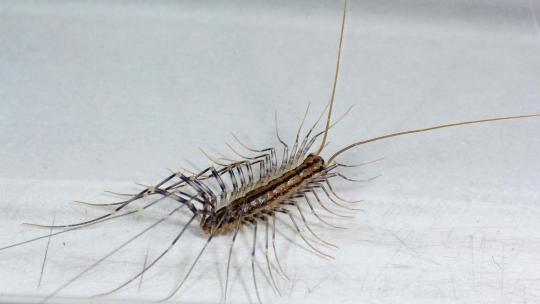
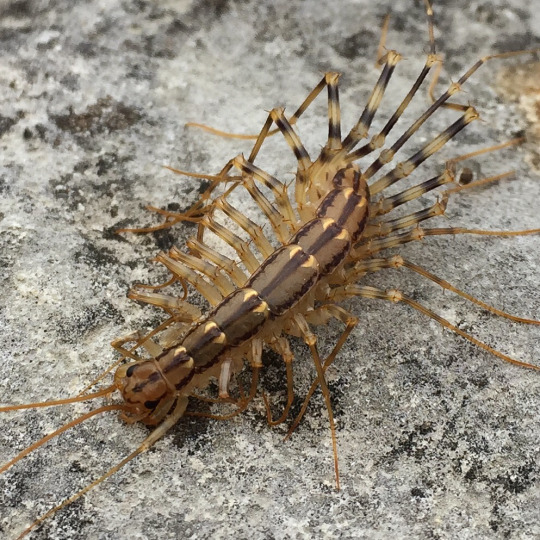
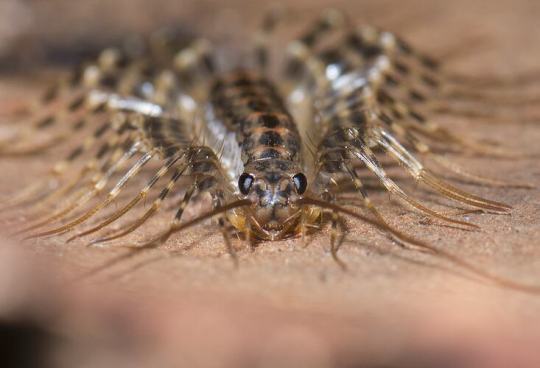
Open Your Home to the Common House Centipede
A common sight in homes throughout Europe, Asia, the Americas, and Australia the common house centipede (Scutigera coleoptrata) is a medium-sized species of centipede originally from the Mediterranean. In the wild, they prefer grasslands and deciduous forests where they can hide under rocks, logs, or leaf litter. These insects have also adapted well to urban development, and are frequently found in basements, bathrooms, and garages, as well as gardens and compost piles.
Like other centipedes, the common house centipede has less than 100 legs; in fact, they only have 15 pairs, with the front pair used only for holding prey or fending off threats. All those legs let the common house centipede move up to 0.4 meters per second (1.3 ft/s) over a variety of surfaces, including walls and ceilings. The actual body of S. coleoptrata is only 25 to 35 mm (1.0 to 1.4 in) long, but the antennae are often as long as the body which can give this insect a much larger appearance. However, they can be hard to spot, especially in their natural environments; their tan and dark brown coloration allows them to blend in seamlessly to surrounding vegetation.
Though they pose little threat to humans, house centipedes are predatory. Their primary food source is other arthropods, including cockroaches, silverfish, bed bugs, ticks, ants, and insect larvae. S. coleoptrata is a nocturnal hunter, and uses its long antennae to track scents and tactile information. Their compound eyes, unusual for centipede species, can distinguish daylight and ultraviolet light but is generally used as a secondary sensory organ. When they do find prey, house centipedes inject a venom which can be lethal in smaller organisms, but is largely harmless to larger animals. This makes them important pest controllers. In the wild, house centipedes are the common prey of rodents, amphibians, birds, and other insects.
The mating season for S. coleoptrata begins in the spring, when males and females release pheromones that they can use to find each other. Once located, the male spins a silk pad in which he places his sperm for the female to collect. She then lays fertilized eggs in warm, moist soil in clutches of 60-150. These eggs incubate for about a month, and the young emerge with only four pairs of legs. Over the next three years, juvenile house centipedes molt 7 times, each time gaining new pairs of legs. After they grow their last pair of legs, immature house centipedes molt an additional 3 times, at which time they become sexually mature. If they can avoid predation, individuals can live up to 7 years in the wild.
Conservation status: The common house centipede has not been evaluated by the IUCN, as it is relatively common both in the wild and in urban areas. Although they have been introduced to areas outside their native range, no detrimental environmental effects have been associated with their spread.
If you like what I do, consider leaving a tip or buying me a ko-fi!
Photos
Joseph Berger
David Paul
Conrad Altman via iNaturalist
#common house centipede#Scutigeromorpha#Scutigeridae#centipedes#myriapoda#myriapods#insects#arthropods#deciduous forests#deciduous forest arthropods#grasslands#grassland arthropods#urban fauna#urban arthropods#europe#north america#south america#asia#australia#oceania#animal facts#zoology#biology
621 notes
·
View notes
Text
If you've heard of black crested macaques or the Yaki monkey, it is probably this one:
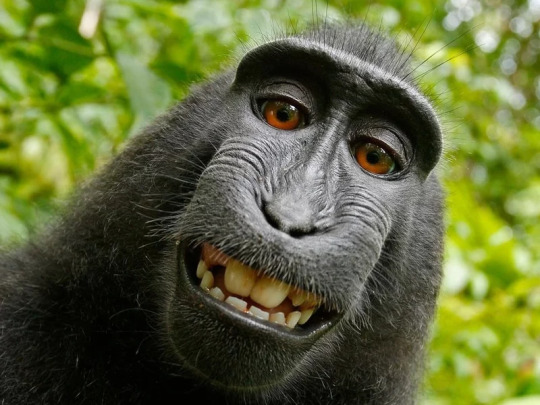
This black crested macaque became famous in 2011 when the photographer David Slater was taking photos in the jungle of Sulawesi Indonesia where black crested macaques are indigenous fauna. Slater was not the photographer who captured this photo, however. It was the macaque who has since been commonly called Naruto who took its own photograph on Slater's camera. The famous monkey selfie sparked a copyright lawsuit brought by PETA onto Slater, which was settled in 2017 with an agreement that Slater would donate a percentage of any profits gained by the pictures Naruto took to organizations that protect this species in the wild.
For the millions who enjoyed Naruto's selfies online, the story ends there. For Naruto and the Yaki the story continues. The black crested macaque is critically endangered. Slater's website says he donates 10% of the proceeds of all "monkey selfie" merchandise to "a monkey conservation project in Sulawesi", and while he does not specify which conservation project he supports, there is one I know of that does incredible work.
Selamatkan Yaki is an operation with a huge impact. The Yaki is one of the most endangered primates in the world, and it can be difficult to gauge just how many of them are out there. This is where biodiversity monitoring comes in to produce the data needed for effective conservation protocol. A pilot study was conducted in Tangkoko Nature Reserve, which has created the blueprint for surveying the entire province using camera traps and remote sensing to observe the Yaki and their threats over time.

Using the data gathered from monitoring, Selamatkan Yaki collaborated with the government agency for natural resource conservation to create a Species Action Plan (SAP). This species action plan is not only an evidence based conservation plan designed to save the Yaki, but all the other species that share its forest home. Establishing the Yaki as a flagship species is crucial as this charismatic monkey is just one of many species that is not found anywhere else in the world.
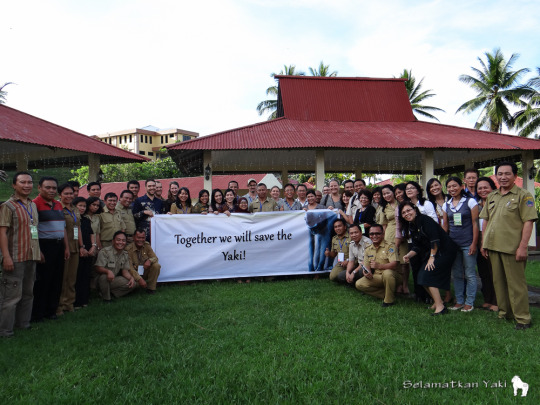
One of the major threats Yaki face, like many other primate species, is hunting for wildlife trafficking and the bush meat trades. While hunting the Yaki is illegal, it takes a true culture shift to keep endangered animals out of traps and cages. Selamatkan Yaki has developed both community conservation and environmental education programs designed to unite local communities in protecting the species. The community conservation program involves surveys conducted since 2007 so that long term data on human-animal relationships can be tracked to best identify community conservation methods. This data is used in the environmental education program which introduces information on biodiversity and conservation to school curriculum and provides research opportunities and scholarships for post secondary students to contribute to conservation.
Selamatkan Yaki understands that it isn't enough to have a team of people dedicated to saving the black crested macaque-- the more people who care and help the better. Everyone has a role to play in conservation, but right now so many people outside Indonesia have only ever seen the black crested macaque once, in a photo online. That's why I'm partnering with Selamatkan Yaki to spread information about the work they do and the species they protect. To learn more about Selamatkan Yaki you can click the links in this post, and stay tuned for more on the black crested macaque.
#selamatkan yaki#black crested macaque#macaques#monkeys#wildlife#conservation#news#animal welfare#animals#endangered species#ecology#macaca nigra#yaki
212 notes
·
View notes
Text
Ways the average person can raise awareness for World Wetlands Day!
There are several ways the average person can raise awareness for World Wetlands Day:
Share information about wetlands and the importance of their conservation on social media. Use the hashtag #WorldWetlandsDay to join the conversation and share facts, photos, and personal experiences related to wetlands.
Participate in local events and activities to raise awareness about wetlands. Many organizations host events such as educational walks, bird-watching tours, and conservation projects that are open to the public.
Write to your representatives and urge them to support wetland conservation efforts. You can also call on them to protect wetlands from development and pollution, and to support the restoration of degraded wetland habitats.
Educate others about wetlands by sharing information and resources with family, friends, and community members.
Take personal actions to protect wetlands in your own community by participating in clean-up efforts, promoting sustainable use of wetlands, and encouraging others to do the same.
Support organizations that work to protect wetlands and their biodiversity. You can donate money or time to help wetland conservation efforts.
Lastly, you can also make conscious choices that help wetlands, such as using natural fertilizer in your garden, reducing your water consumption and using water-saving devices, and choosing products that are environmentally friendly.
Remember, World Wetlands Day is not only a day to raise awareness but also to take action to protect wetlands and ensure that they are around for generations to come.
618 notes
·
View notes
Text

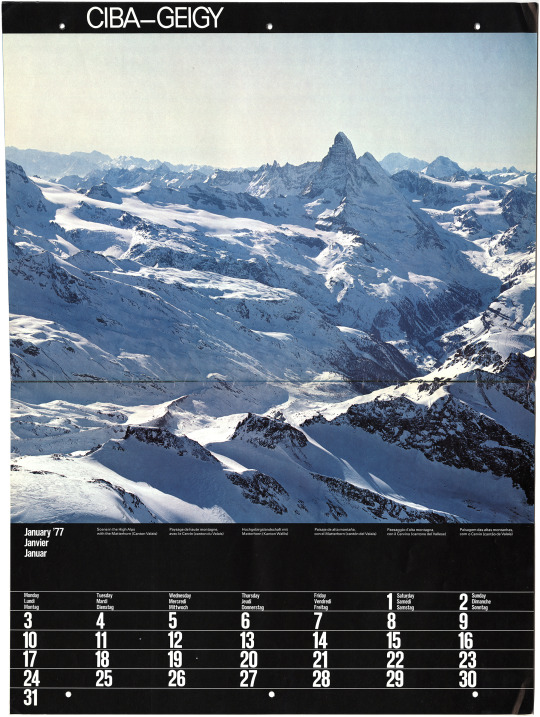


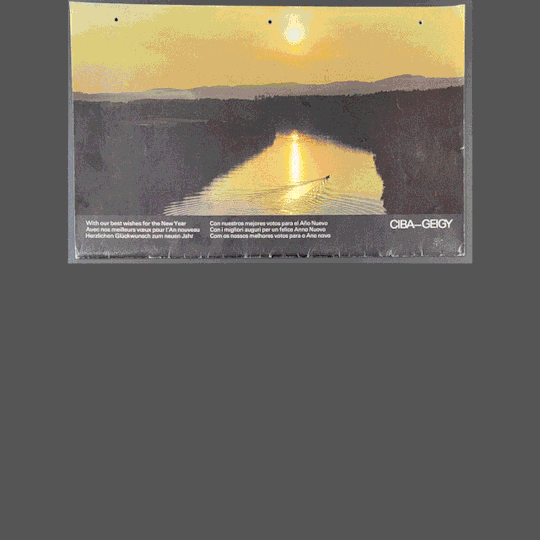



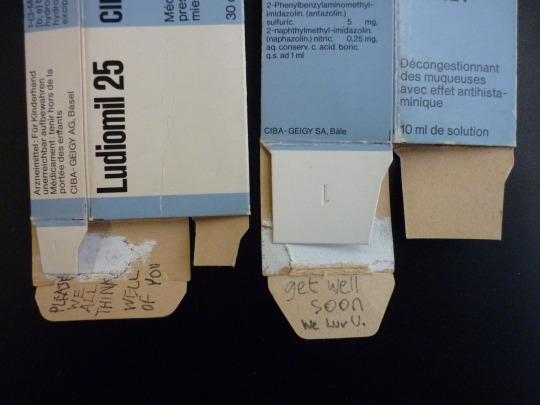
Happy 2024!
We're celebrating the new year with some deep cuts from the Vignelli archives: 1970s calendars
1977 Ciba Geigy
This is a rare one! A calendar for Swiss pharmaceutical company Ciba-Geigy.
The cover reads [in six languages]:
With our best wishes for the New Year
Avec nos meilleurs voeux pour l’An nouveau
Herzlichen Glückwusch zum neuen Jahr
Con nuestros mejores votos para el Año Nuevo
Con I migliori auguri per un felice Anno Nuovo
Com os nossos melhores votos para o Ano novo
Features beautiful scenic photos of Switzerland which are accompanied by an essay about environmental conservation by Dr. Bruno Moeckli, also in six languages.
Excerpt from “Swiss Landscapes” essay in calendar [sorry, only posting in English due to space]:
“Wild scenery in Switzerland is now confined to nature conservation areas and some alpine peaks, In the process, too little thought was given to the preservation of the physical essentials of life, namely water, air and soil. Now, what formerly gave concern only to artists and idealists becomes of vital importance to us all.
With the growing realization of the extent to which the despoilation of air, water, and other natural resources has progressed, it has also been realized that the various aspects of nature conservation and environmental protection share the same ultimate objective: to permit the harmonious co-existence of all forms of life, whether human, animal or plant, all of which require an environment in which they can continue to flourish in the future. Despite his mastery of science and technology, man is no exception to this rule. Furthermore, man as a creature of aesthetic sensibilities is capable of appreciating and benefiting from natural beauty, both physically and spiritually.”
Click through all the images to also see Vignelli-designed pharmaceutical packaging for Ciba-Geigy from 1976.
25 notes
·
View notes
Text
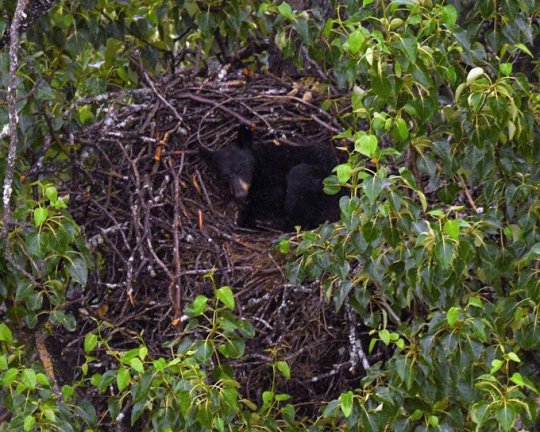
via U.S. Fish and Wildlife Service
A black bear naps in a bald eagle nest on JBER, AK during an eagle productivity survey.
Photo Credit: Cayley Elsik, JBER Environmental Conservation.
60 notes
·
View notes
Text
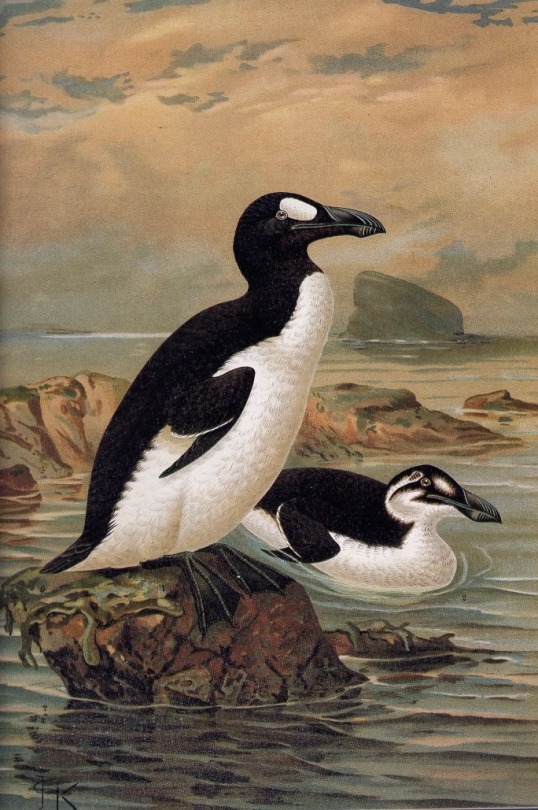



Lady Cust's Great Auk egg
An Egg of the Extinct Great Auk (Pinguinus impennis), Iceland, 1844
Eggs of the Great Auk are regarded as being among the most sought-after of all natural history objects, due to their exceptional rarity. The Victorians thought of them so highly that every surviving egg was listed and its whereabouts carefully recorded. At this time more than 60 had survived and each of these had been collected in the years before 1844, when the bird itself became extinct.Today, almost all of those that still exist are in museums from which they will never be released with only four remaining in private hands.
The Great Auk was a flightless, aquatic bird measuring approximately 2½ feet tall and weighing on average 11 pounds. With a black body and white underbelly, its appearance fell somewhere between a puffin and a penguin. When hunting, the Great Auk employed a hooked beak and powerful swimming stroke to stalk fish and crustaceans. Native to the cold waters of the North Atlantic, their nesting areas ranged from the coasts of Newfoundland, Maine, Massachusetts, and even South Carolina and Florida, to Iceland, the Faroe Islands, the eastern coast of Greenland, and the islands off the coast of Scotland, namely the Orkneys and St Kilda; during the winter months they were known to go as far west as Norway and Denmark, and skeletal remains have been found as far south as Gibraltar.
Great Auk pairs mated for life, laying but one egg per breeding season on small islands and rocky coastlines. The longitudinal, pear-shaped eggs were perfectly adapted to roll in tight circles, greatly reducing the chance of being lost off a cliff edge. Parents would take turns incubating the egg, all while benefitting from the protection of dense social colonies and few natural predators.
Historical records indicate that the Great Auk showed no innate fear of humans, and this—coupled with their slow and awkward movements on land—greatly increased their vulnerability to extinction as Europeans began to massively exploit the species for food, for their downy feathers, and horrifyingly, for kindling in fires, as their very oily feathers were highly flammable.
On June 3, 1844, the last known breeding pair of Great Auks were killed off the coast of Iceland, on Eldey Island, after being captured by fisherman, making this incredibly rare specimen a poignant reminder of humanity's responsibility to conservation and environmental stewardship.
Because of their tragic history, Great Auk eggs are exceedingly rare, and even more so in private hands. Thanks to the efforts of early passionate ornithologists, in particular Symington Grieve, Edward Bidwell, Paule Marie Louise & John Whitaker Tomkinson, Ch. F. Dubois, and Leon Olpho-Galliard, surviving specimens of skins and eggs, including the present example, are well-documented in the literature.
The first record of Lady Cust’s Egg is that it was bought in Paris during the first half of the nineteenth century by the celebrated naturalist William Yarrell who presented it to Lady Cust. No-one knows quite why he did this, but she kept it for many years. At her death it passed into the collection of another well-known ornithologist, George Dawson Rowley, and it has passed through the collections of several other illustrious naturalists (including Captain Vivian Hewitt) in the years since his time.
The egg is listed and its story told in Symington Grieve’s celebrated monograph The Great Auk (1888), P. and J., Tomkinson’s Eggs of the Great Auk (1966) and Errol Fuller’s comprehensive book The Great Auk (1999).
Top right photo: LADY CUST’S EGG ILLUSTRATED IN TOMKINSON'S CELEBRATED TREATISE EGGS OF THE GREAT AUK (PUBLISHED IN 1966, BUT THE PHOTOS TAKEN CIRCA 1900).
Sotheby’s
174 notes
·
View notes
Text
Intro Post
Hi! I’m Gwen. I’m 26, she/her, have a masters in wildlife biology and conservation management, bachelors in biology with minors of English and environmental studies. I have two younger siblings, and 8 pets (5 dogs, 1 rabbit, and 2 cats). I write a lot of fanfiction for the Penguins of Madagascar fandom, but I also write several original things, too.
Genres I write tend to fall under: fantasy, urban fantasy, sci-fi, horror, weird science, action comedy (with animal characters), mystery, poetry.
Feel free to ask to be on any tag list! WIPs below the cut.

Original WIPs
Hidden Earth Chronicles
Summary: Necromancer Vasco has just returned home to find his beloved wife missing. He and his brother-in-law set out to find her and along the way Vasco learns more about where he came from and his own abilities.
Tropical Storm
Summary: Martin along Evy and Diego, are newly moving into the San Diego Zoo. However, Martin’s life is unexpectedly rocked when a secret agent accidentally drops a piece of top secret spy equipment among his belongings. Now he’s been recruited by the local espionage squad. Together they keep the zoo safe from assorted enemies, as well as face international threats.
Also planning: Patagonia Penguins which takes place long before this but is connected via being about Martin's parents.
My Baby’s a Werewolf
Summary: Single Dad, Sebastian’s, toddler daughter, Amber, gets bitten by a “big dog” one evening and becomes a little werepup. Now her dad is handling the pressures of being a single dad as well as trying to get his daughter back to normal.
Obscure Science
Summary: Rejected scientist Dr. Darwin Rose finds new employment with an off-the-record agency that focuses on well…obscure and bizarre occurrences, whether they be paranormal, supernatural, fantastical, or seem like something from science fiction, this agency investigates it all. Darwin is paired up with another scientist, Dr. Cassidy Blue, and together they have some crazy escapades.
Shady Acres
Summary: Sydney, freshly graduated from high school, goes to spend the summer with her older brother Ryan at his cabin. They set up trail cameras for fun but soon get unexpected photos that introduce them to whole new oddities that the woods can offer.
Title Under Construction
Summary: A small town has become plagued by a mysterious creature that keeps eating the inhabitants.

Fanfic WIPs
A Scientific Romance Series
A series of Penguins of Madagascar fics about Kowalski the penguin and his invention unexpectedly pairing him up with the penguins' arch nemesis: Dr Blowhole and how they’re making this relationship work.
Spin Offs:
Scientist Overboard
Summary: Francis and Kowalski have been dating for over a year when Kowalski and the others go on a mission out at sea. Kowalski finds himself washed overboard during a bad storm, waking up without any memory on an island. He and his spirit guide then attempt to return to New York while the others try to find him.
Haunted Mansion
Summary: Blowhole, Kowalski, and their children decide to go on a family vacation, but get sidetracked by a haunted mansion's advertisement that Blowhole couldn't pass up. Will include 2 guest OCs of my friend @insert-meaningful-username. A Franski fic with bonus fankids.

Collaborative WIPs with @insert-meaningful-username
Mallory Manor (Title Under Construction)
Summary: Rose sneaks into the sketchy old Mallory Manor at the end of the street and discovers far more than she bargained for.
Clandestine Affairs
Summary: During the biggest heist they’ll ever pull off, infamous criminal duo Show Biz planned on robbing one of the richest and highly valuable connections to have, Julien Prince. However, they’ve finally been caught by their rivals. With the heroes winning this battle, surely things will now be brought to justice...until, the charges are read. Sentence to death for...murdering the Senator of Delaware?!? NOW, our heroes must team up with the baddies to end this confusion, solving the mystery of the true mastermind before the crooks are falsely put to death for the only crime they didn’t commit.
Caretaker of Madagascar (Penguins of Madagascar series)
Summary: Some believe misfortune can bring people together. Others believe that destiny has the power to interconnect lives, whether those lives wanted to or not. Call it a coincidence. Call it fate. Call it a despicable force of nature. Either way, nothing could've stopped the fact that Bridget Ailith, a cantankerous new zookeeper, found herself forced to team up with the Penguins to undo a machine's disastrous effects. Doesn't help that those penguins are now—
Do You Read Me, 00FU? (Subnautica / Neebs Gaming inspired series)
Summary: Hired aboard Alterra’s prestigious and pristine spaceship, The Aurora, space engineer rookie Appsro finally gets his opportunity to voyage across the galaxy… Until it fucking crashes onto an uncharted pelagic planet. Alone and stranded on quarantined 4546B, all Appsro has in his survival skill set is his ingenuity, some tools, stubbornness, and the aid of a few (debatable if helpful or not) Alterra HQ Operators. Can he prevail and escape the treacherous deep waters, enormous aquatic monsters, and the lethal thousand-year-old bacteria that feast upon the planet? Probably not. He’s fucked.
11 notes
·
View notes
Photo
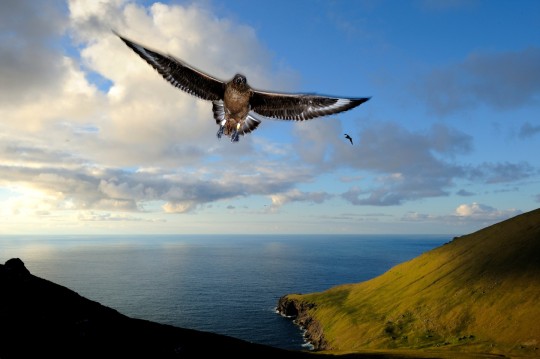
My friends and fellow National Geographic photographers wanted to share some of their images as we celebrate Earth Day. So we’ve been digging into The Photo Society Archive (our shared effort to showcase decades of our work for NatGeo) and pulling out some of our best images, just for today! Beginning in 1970, Earth Day is seen as the birth of the modern day environmental movement. It has since grown to an annual global event— inspiring millions to care about the planet we live on. If you’d like to see more just visit the TPS Archive link in @thephotosociety to discover more of our incredible world. Happy Earth Day everybody! (My image of the Skua is from St. Kilda, a great haven for seabirds off the west coast of Scotland.) Photo 1: Jim Richardson @jimrichardsonng Photo 2: Peter McBride @pedromcbride Photo 3: Michael Melford @MichaelMelford Photo 4: Joel Sartore @joelsartore Photo 5: Jodi Cobb @jodicobbphoto Photo 6: Gerd Ludwig @gerdludwig Photo 7: Christian Ziegler @christianziegler Photo 8: Melissa Farlow @melissafarlow Photo 9: Bruce Dale @brucedalephotography Photo 10: Richard H Stewart #EarthDay #conservation #sustainability #climatechange #earthday2023 — view on Instagram https://ift.tt/8YHuWtw
61 notes
·
View notes
Text
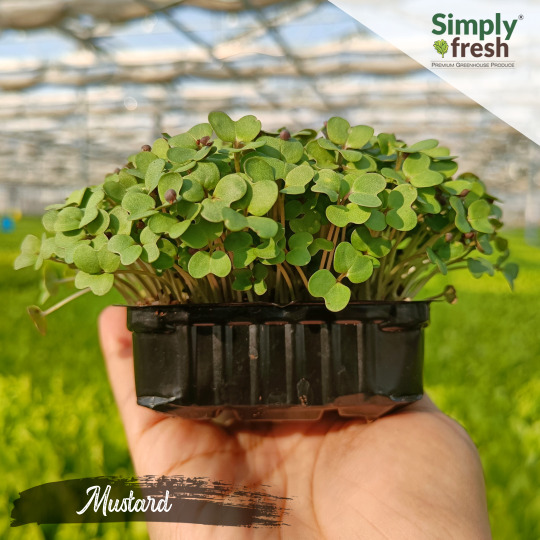
#Microgreen Photos#Seedling Photos#Cut Out Photos#Radish Photos#Eating Photos#Green Color Photos#High Angle View Photos#White Color Photos#Freshness Photos#Magnification Photos#Environmental Conservation Photos#Growth Photos#Salad Photos#Seed Photos#Animal Wildlife Photos#Antioxidant Photos#Benefits Photos#Botany Photos#Color Image Photos#Concepts Photos#Crucifers Photos#Cutting Photos#Design Photos#Dieting Photos#Farm Photos#Food Photos#Grass Photos#Group Of Objects Photos#Healthy Eating Photos#Heap Photos
0 notes
Text

Sparrows are important!
#house sparrow#writerslife#biodiversity#women writers#writer things#articles#writerscommunity#blogger#photooftheday#my photos#photography#biodiversityday#biodiversity hashtag#biodiversity loss#biodiversity heritage library#biodiversity preservation#biodiversity conservation#environment#conservation#ecosystems#ecology#environmentalism#biology#science#the more you know#tumblr pics#artists on tumblr#tumblr milestone#photographers on tumblr#writers on tumblr
0 notes
Text



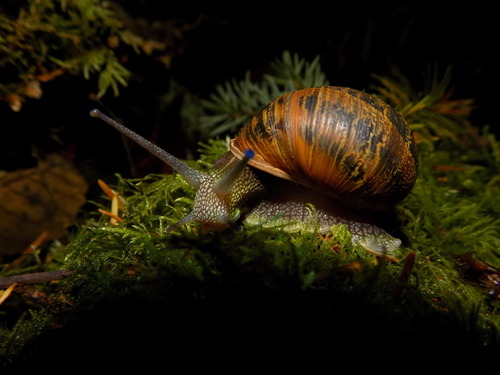
Life in the Slow Lane: The Brown Garden Snail
Perhaps the most widely known member of the mollusk group, the brown garden snail (Cornu aspersum), also known as the European garden snail, is native to the Mediterranean region of southern Europe and northern Africa, and his since spread to every continent except Antarctica. It thrives in temperate zones, particularly in open forests, coastal dunes, and urban parks and agricultural spaces. This spread has largely been facilitated by humans, and may have started as early as the Neolithic era nearly 8500 years ago.
The brown garden snail's name is an excellent descriptor of the species; both the body and the shell are mainly shades of brown. Generally the body is lighter than the shell, and secretes a thin layer of mucus to keep itself moist. The shell is about 2.5 to 4 cm (0.98-1.57 in) wide, while the body itself is roughly 5-9 cm (1.97-3.54 in) long. Body and shell combined, C. aspersum only weighs 15g (0.53 oz) at maximum. The body is made of two parts; the head, which carries the eye stalks, mouth, and sensory tentacles; and the foot, essentially a large muscle which the snail uses to move from place to place. The rest of its organs, including the heart, lungs, stomach, and anus are contained within the shell itself. Only the genital pore, located on the side of the foot, is exposed.
C. aspersum is primarily an herbivore, feeding on leaves, flowers, and fruits, as well as rotting plant and animal matter. In order to obtain the calcium it needs to build and maintain its shell, the European garden snail also occasionally consumes soil. Because of its slow nature, reaching a maximum of only 2.4 mm/s (0.09 in/s), this species is a common food item for other predatory snails, centipedes, glow worms, small mammals, lizards, frogs, and birds. However, the brown garden snail is able to retreat into its shell and produce a thick, frothy mucus membrane when threatened.
Like other terrestrial mollusks, the European garden snail is a hermaphroditic species, possessing both male and female gametes. Individuals may reproduce year round, provided with plentiful resources and good environmental conditions. When two snails encounter each other and wish to mate, each one spears the other with a hard calcite spine, known as a love dart. These darts allow the two to exchange sperm, and the process may take several hours. Afterwards, an individual may store viable sperm for up to 4 years. About ten days after a snail fertilizes its sperm, it lays about 50 eggs in a sheltered area; a single snail may do this up to 6 times a year. Eggs take between 2-4 weeks to hatch, and emerge with a soft shell. It takes about 10 months for juveniles to reach full maturity, and they may live up to 3 years in the wild.
Conservation status: C. aspersum has been rated as Least Concern by the IUCN. In both its introduced and native range, it is considered a pest species due to its consumption of crops. However, this species has also been adopted in some areas as a pet or as an edible delicacy.
If you like what I do, consider leaving a tip or buying me a ko-fi!
Photos
Bill Frank
Alan Henderson
Kostas Zontanos
Rand Workman via iNaturalist
#brown garden snail#european garden snail#Stylommatophora#Helicidae#land snails#snails#gastropods#mollusks#invertebrates#deciduous forests#deciduous forest invertebrates#grasslands#grassland invertebrates#urban fauna#urban invertebrates#europe#southern europe#africa#north africa#animal facts#biology#zoology
107 notes
·
View notes
Photo
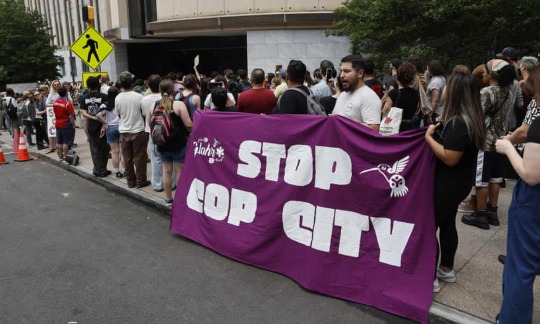
[Image ID: A large group of people are gathered in protest on a sidewalk. A purple banner reading “Stop Cop City” is centered in the front of the photo. End ID.]
A broad coalition of groups in Atlanta has launched a referendum to give voters a chance to say whether they want the controversial police and fire department training center known as “Cop City” built in a forest south-east of the city.
The effort requires organizers to collect about 70,000 signatures from Atlanta registered voters in 60 days. Then the question of the city canceling its agreement with the Atlanta Police Foundation to build the $90m center can be added to municipal election ballots in November.
The push comes after an estimated thousand people who showed up at City Hall on 5 June proved insufficient to stop Atlanta’s city council from approving about $67m for Cop City. Meanwhile, machines have already begun clear-cutting trees on the project’s 171-acre footprint in South River Forest.
The referendum faces what one organizer called “an atmosphere of repression” – including two activists being charged with felonies last week while putting up fliers, bringing total arrests since December to 50.
The largest group of arrests, on 5 March in a public park in the forest near where the project is planned, was followed by local government closing the park, in effect shutting off tree-sitting protests by “forest defenders” that had gone on for more than a year.
“We’re at the stage where they’ve pushed people out of the forest, they’ve arrested people … they’ve fenced off the forest, they’ve even begun clear-cutting,” said Kamau Franklin, founder of local group Community Movement Builders. “We’re at the stage where the most direct, legal mechanism to stop this project is by referendum.” [...]
...the movement opposing the project has drawn a wide range of people locally, nationally and internationally who oppose police militarization, urban forest destruction amid climate change and environmental racism. Most residents in neighborhoods surrounding the forest are Black.
Most of the organizations driving the referendum are also Black-led, including the regional chapter of Working Families Power, Black Voters Matter and the NAACP. Officials from the Georgia governor, Brian Kemp, down to the mayor have consistently referred to opposition against the center as the work of white “outsiders”.
“That narrative is false,” said Britney Whaley, regional director of Working Families Power. “This has been national, but it’s also been community-grown for a few years now.”
Ashley Dixon, an Atlanta-area organizer, has led canvassing efforts to inform neighborhoods around South River Forest about the center for nearly a year. Her team has spoken to more than a thousand people. About 80% opposed the project once they knew about it, she said.
The only academic poll on the issue to date, from Atlanta’s Emory University, showed slightly more Black respondents opposed the project than supported it, with the opposite being true for whites. Atlanta’s population is 48% Black.
The idea for the referendum came from one that succeeded in stopping a spaceport from being built in coastal Georgia, said Will Harlan, founder of Forest Keeper, a national forest conservation organization. “To me, Cop City is the most important issue in conservation in the south-east,” Harlan said. “A referendum is the smartest, most democratic solution … [and] a way to find resolution and closure.”
Although the 2022 spaceport referendum affected a county of only 55,000 people, similarities between the two controversies point to the role voters can play when other efforts fall short.
In that case, local officials “dug their heels in” and stopped responding to press requests or providing transparent information to the public, said Megan Desrosiers, who led the referendum. In the case of Cop City, the Atlanta Police Foundation has stopped answering press requests for at least a year, and the city of Atlanta was recently discovered to be understating the project’s cost to taxpayers by about $36m.
The project is planned on land the city owns that is located in neighboring DeKalb county. Because of Atlanta’s ownership, only Atlanta voters can participate in the referendum. [...]
Organizers of the Cop City referendum pointed to the state’s heavy-handed approach to protesters as a primary concern. There have been 42 domestic terrorism charges to date. A bail and legal defense fund’s members were also arrested and the state added fundraising to its criminal description of the training center’s opposition.
In that context, it took about a dozen attempts at finding a legally required fiscal sponsor for the referendum, which may need as much as $3.5m to reach success, said spokesperson Paul Glaze.
Cliff Albright, co-founder of Black Voters Matter – one of two organizations that agreed to take the sponsorship role – said the recent Atlanta Solidarity Fund arrests were done “to send a message, in hopes it would have a chilling effect. We’re not naive about what the threats are – but we believe our community cares about this issue.”
-- From “Activists push for referendum to put ‘Cop City’ on ballot in Atlanta” by Timothy Pratt for The Guardian, 16 Jun 2023
48 notes
·
View notes
Text
Roles of a Nature Interpreter
This week's blog prompt got me thinking, specifically about my interests and how I can incorporate this into communicating information regarding the natural environment to the public. I touched upon it briefly in my last blog post, however, I have always really enjoyed photography, and in recent years nature photography has become a hobby of mine.
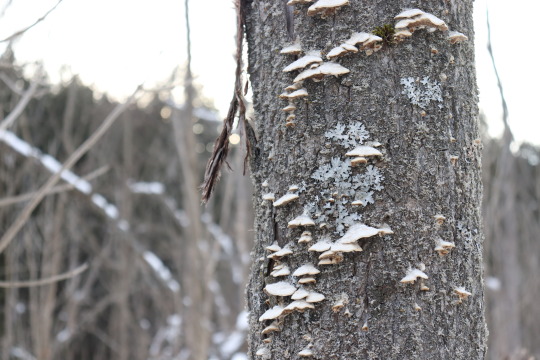
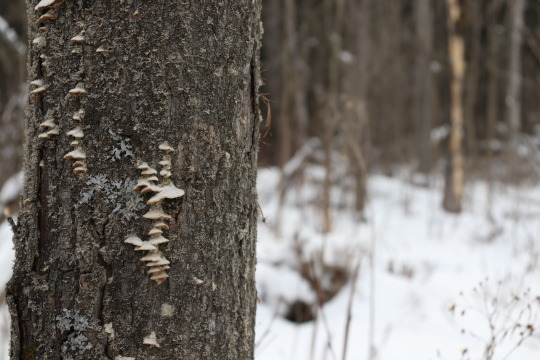
Some photos I took the other day while on a walk :)
In terms of my ideal role as an environmental interpreter, I envision a position in which I can combine my love for the environment and capture it through a lens. I also love to find new trails and hikes in which I can explore nature, so it would also be nice to incorporate this into my role. Therefore, I envision myself working as some type of park guide in which I can share all my knowledge with others and demonstrate the beauty and importance of nature through real-world experiences as well as photographs. I would love to focus on birds, their importance, and their impact on our environment. I have always had an interest in birds and believe that they are beautiful animals! One specific location that I've always been interested in is Banff National Park. Banff is home to over 311 species of birds with the Grey Jay or Canada Jay being one of the most popular, which is one of my favourite birds. I have previously done projects on these birds so it would be cool to explore even more in-depth about them and hopefully teach other people everything I love about them as well! In this role, my responsibilities would include giving guided tours outlining the importance of different plant and animal species, with a focus on birds, and creating a fun environment in which children and adults of all ages want to learn. I believe it would be fun to focus more on the visual aspect of nature interpretation, teaching people how to identify differences between certain plant species and so on. This would help to tie in my love for photography! I would also love to include as many hands-on activities and experiences for them as I believe this helps to immerse people in their environmental surroundings. I am a more hands-on learner however, as a nature interpreter, I must recognize the various learning styles and cater my teaching to address everyone's needs.
Another way in which I could envision myself taking on the nature interpreter role would be through an online blog or website which would act as a virtual gateway into the natural world. I would love to showcase my photographs alongside insights and personal stories to help educate and enlighten individuals about the amazing world around us! Each post will address various ecosystems, the intricacies of wildlife, and how/why environmental conservation is extremely important in today's day and age. No matter what roles I would take on as an environmental interpreter, I just want to make a difference and show people that caring about nature is super important, just as people have taught me!
11 notes
·
View notes
Text
Good News - March 8-14, 2024
Like these weekly compilations? Support me on Ko-fi! Also, if you tip me on here or Ko-fi, at the end of the month I’ll send you a link to all of the articles I found but didn’t use each week - almost double the content! (I’m new to taking tips on here; if it doesn’t show me your username or if you have DM’s turned off, please send me a screenshot of your payment)
1. Colorado could bring back wolverines in an unprecedented rewilding effort

2. heat pumps slash emissions even if powered by a dirty grid

“Installing a heat pump now is better for the climate, even if you run it on U.S. electricity generated mostly by fossil fuels. […] Across the 48 continental states, RMI found that replacing a gas furnace with an efficient heat pump saves emissions not only cumulatively across the appliance’s lifetime, but also in the very first year it’s installed.”
3. Bald eagles seen nesting in Toronto for first time in city’s recorded history
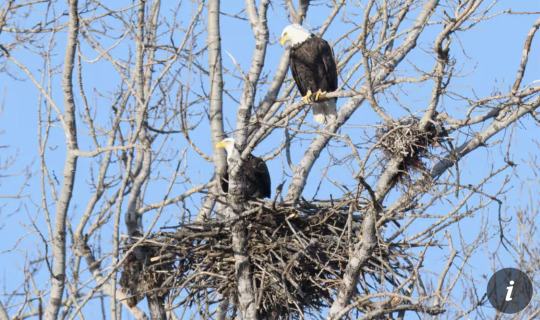
“Presence of birds proof of improving health of city’s green spaces, as they are highly sensitive to environmental disturbances”
4. Good news for coral reef restoration efforts: Study finds 'full recovery' of reef growth within four years
“"We found that restored coral reefs can grow at the same speed as healthy coral reefs just four years after coral transplantation," says Ines Lange of University of Exeter, UK. "This means that they provide lots of habitat for marine life and efficiently protect the adjacent island from wave energy and erosion."”
5. The rewilding project bringing back an ancient breed of cattle to Portugal

“For millennia, grazing aurochs created open spaces for other species to thrive. As the closest to the extinct auroch depicted on the prehistoric engravings, Goderie says tauros can fulfil [sic] a similar ecological function that is vital for biodiversity. "Natural grazing will lead to more natural processes that are missing from local ecosystems, more habitats and more biodiversity," he says.”
6. Sycamore Gap: New life springs from rescued tree
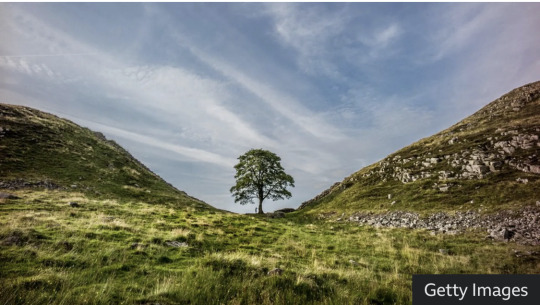
“The horticulturalists also successfully planted seeds from the Sycamore Gap tree, now its descendants. Five months on, they are looking after nine surviving grafted plants and 40-50 seedlings.”
7. Massachusetts library will excuse overdue book charges in exchange for cat photos: ‘Feline Fee Forgiveness’
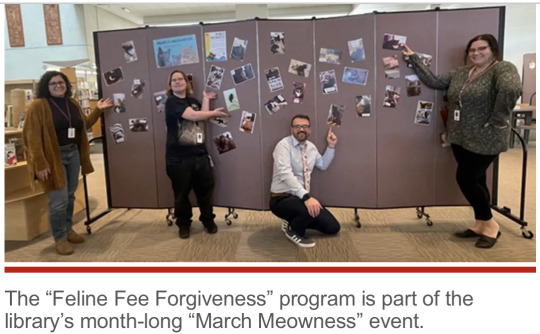
““Some of the staff were in a meeting and they were coming up with ways to bring people back to the library, and they thought, ‘What if we removed as many barriers as possible and told people they could show us a picture of a cat, draw a picture of a cat or just tell us about a cat?'””
8. Lesbian couple give birth to each other’s baby in UK first
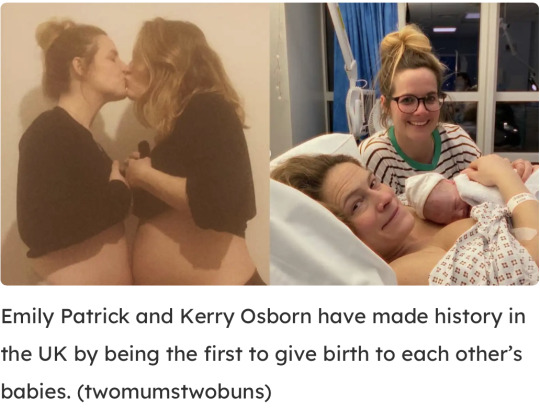
“Their success marks the first time the procedure – which allows lesbian parents to simultaneously share in the pregnancy process, with one supplying eggs and the other carrying the baby – has been carried out in the UK.”
9. Biden-Harris administration has established four new units in the National Wildlife Refuge System
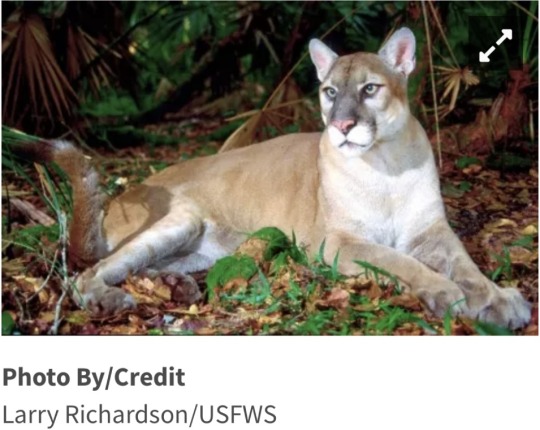
“The new four-million-acre conservation area will provide crucial protected wildlife corridors, enhance outdoor recreation access to the public and bolster climate resilience in southwest Florida.”
10. New truck front to save lives
“[B]etter truck designs can reduce passenger car compartment deformations by 30-60 percent, which reduces the risk of injury for the car occupants. Deformation of the truck was also reduced in sensitive areas and improved truck driver safety and cargo security.”
March 1-7 news here | (all credit for images and written material can be found at the source linked; I don’t claim credit for anything but curating.)
#hopepunk#good news#bald eagle#eagles#trees#sycamore gap#aurochs#portugal#cattle#heat pump installation#wolverine#colorado#coral reef#library#cats#lgbtqia#lgbtq#ivf#florida#puma#cougar#wildlife#habitat restoration#trucks#safety#animals#ecology#tauros#rewilding#uk
7 notes
·
View notes